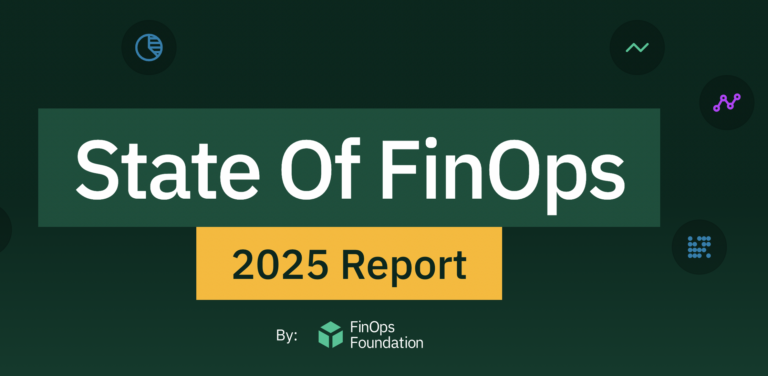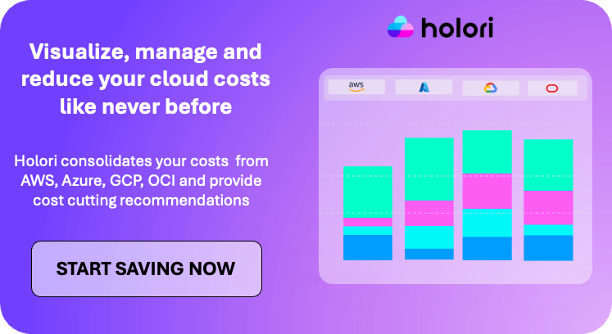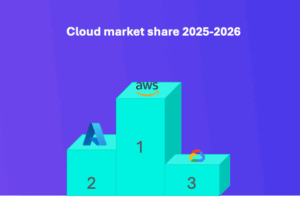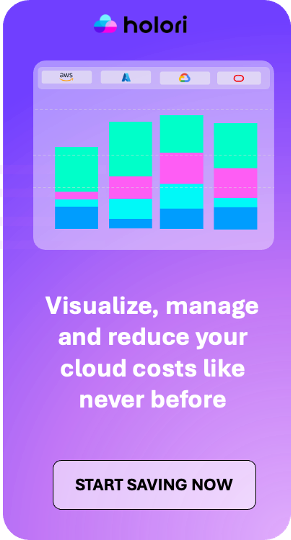The latest State of FinOps Report is here, providing fresh insights into how organizations managing $69 billion+ in cloud spend are evolving their FinOps practices in 2025. The findings highlight a shift beyond traditional cloud cost management as companies tackle new challenges, from AI spend governance to broader technology cost optimization.
Here are the most important trends shaping FinOps in 2025:
1. Cloud+ is Expanding FinOps Beyond Public Cloud
FinOps is no longer just about managing public cloud costs. Organizations are increasingly applying FinOps principles to SaaS, software licensing, private cloud, and data centers—a shift referred to as Cloud+. Instead of jumping directly to optimization, companies are prioritizing cost visibility, forecasting, and allocation to improve predictability before deeper efficiency measures.

2. AI Spend is Becoming a Core FinOps Concern
With AI investments surging, 63% of FinOps teams now manage AI-related costs—a sharp rise from 31% last year. Nearly 97% of organizations are investing in multiple infrastructure types for AI, spanning public cloud, SaaS, and private data centers. However, AI cost governance is still in its early stages, with companies focusing on visibility, allocation, and forecasting before implementing true cost optimization strategies.
3. Workload Optimization is Still the Top Priority, but Governance is Gaining Traction
FinOps teams continue to focus on workload optimization and waste reduction, but a growing emphasis on governance and policy enforcement at scale is emerging. As organizations mature in their cost management strategies, they are implementing automated controls, compliance frameworks, and proactive cost allocation policies to sustain long-term efficiency.

4. FinOps Teams Are Stretched Thin – Investment in Tooling & Automation is Critical
With FinOps expanding into new spending categories, teams are reporting higher workloads without proportional increases in resources. To maintain efficiency, companies are prioritizing tooling, automation, and upskilling. The most effective FinOps teams are leveraging AI-driven analytics, automation, and cloud cost management platforms to stay ahead.
5. Sustainability Efforts Have Stalled
Despite a rise in ESG initiatives, cloud sustainability reporting remains largely flat. While 53% of European organizations report cloud carbon emissions (up 18% YoY), only 29% of North American companies do the same. More critically, just 3% of FinOps teams actively optimize costs based on carbon impact, reinforcing that cost efficiency continues to drive most cloud decision-making.

6-FOCUS Adoption is Growing, but Challenges Remain

More than half of FinOps practitioners plan to use FOCUS (FinOps Open Cost and Usage Specification) in the next 12 months, but adoption challenges persist. When asked about their plans:
- 57% plan to use FOCUS.
- 24% are still figuring out their approach.
- 18% do not plan to adopt it at all.
Among those adopting FOCUS:
- Over 50% aim to automatically integrate it into their data pipelines.
- One-third plan to use it via third-party tools or services.
- 16% will use it for manual data analysis.
However, challenges to FOCUS adoption remain. Practitioners cited barriers such as limited time, lack of skills, and dependencies on billing providers. Some organizations are also waiting for wider adoption among SaaS providers before committing.
The upcoming FOCUS 1.2 release is expected to drive further adoption, especially as more SaaS providers begin outputting billing data in the standardized format. This could significantly improve cost transparency across multi-cloud and SaaS environments.
What’s Next for FinOps in 2025?
Looking ahead to 2025, FinOps teams will need to balance cost governance, AI cost control, and investments in automation to remain effective. As organizations expand their spending categories, success will depend on integrating FinOps into broader IT financial management disciplines and continuously adapting strategies to new challenges.
Holori FinOps tools could a great fit for you in 2025 to manage across cloud providers and SaaS! Give it a try: https://app.holori.com/






